- JAPANESE
- LANGUAGE
X
 THAT IS GOOD
THAT IS GOOD
Visiting different areas and exploring the Jomon culture of each place is like creating a map of the Jomon period in your mind. Whether you are in a city or in the countryside, you can find Jomon ruins in almost every place. If you go to the rivers and beaches in the neighborhood, you can even find stones that were used to make stone tools. As I mapped out the elements of the Jomon period one by one on the map in my brain, I began to find it interesting to go to empty ruins where there was nothing but grass. It was right around this point that I began such a journey.
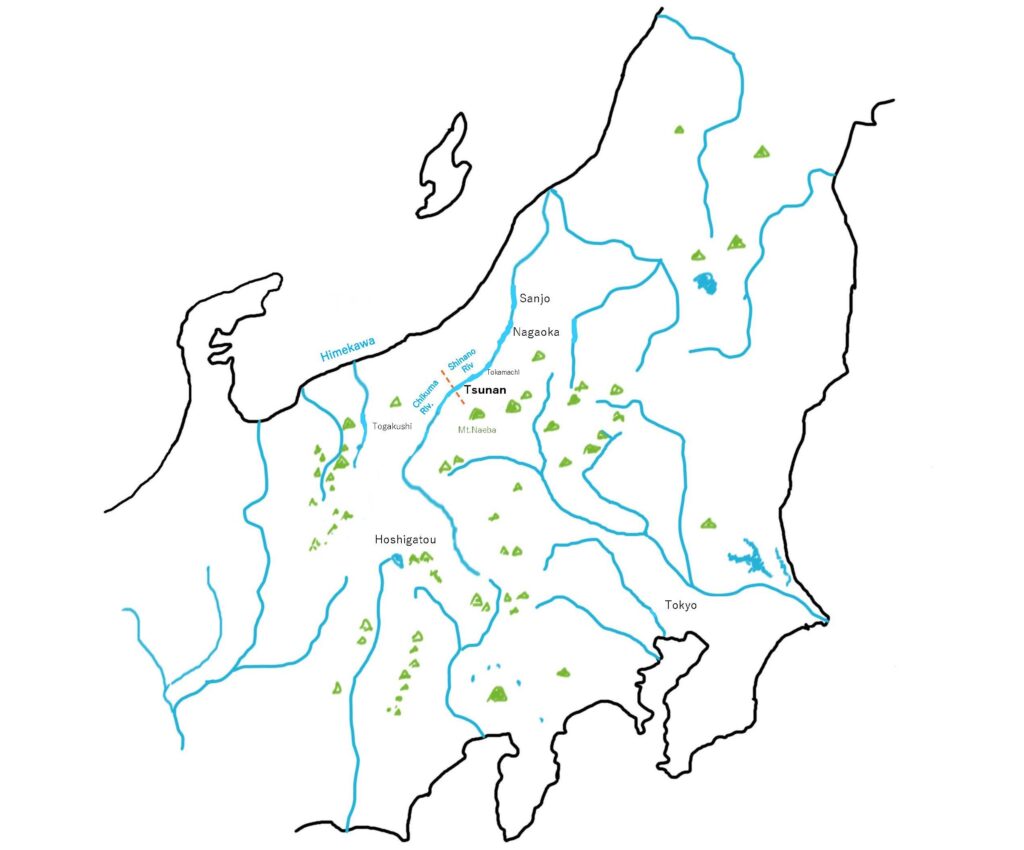
One year in May, we went to a campground in Togakushi Village, Nagano Prefecture. On this occasion, it rained heavily in the middle of the night on the first day, and the front room of our two-room tent was flooded. The rest of the day, however, was fine, and we drove through the magnificent scenery of the Togakushi mountain range, ate the famous soba noodles, found the Geopark Museum and immersed ourselves in the deep world of geology, and enjoyed a bonfire at night. We were so accustomed to the camping days that we didn’t want to go back to our daily lives in Tokyo. When we looked up the surrounding area on a map app, we found that one of the places where Jomon Vessel with Flame-like Ornamentation was excavated was Tsunan Town in Niigata Prefecture, about an hour and a half drive from Togakushi. The town is not so far from here. I immediately took a hotel in Tokamachi, which is next to Tsunan.
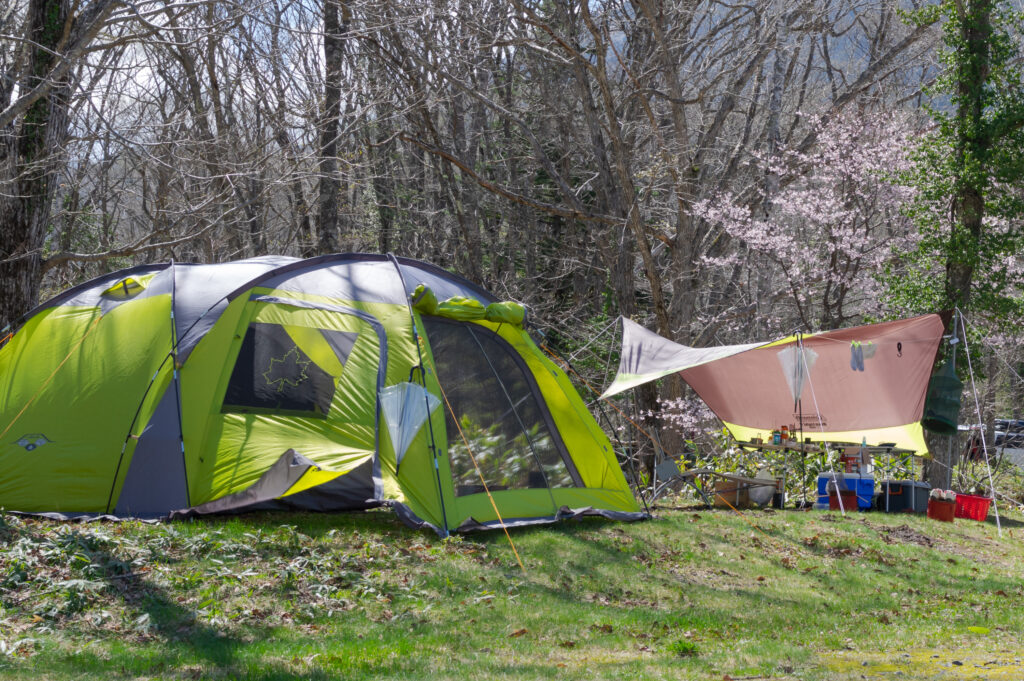
We loaded our camping tools into the car, and Hirokawa drove from Togakushi village, past Lake Nojiri and the Madarao Kogen, to choose the road that joins the Chikuma River at Iiyama City. The Chikuma River, once swollen in the Iiyama Basin, enters the mountainous area again and becomes narrower and narrower. The place where the Chikuma River changes its name to the Shinano River is Tsunan Town.
At that time, I was interested in the roads of the Jomon period, and naturally thought that there must have been a road that went along the river. This is because the upper reaches of the Chikuma River are home to Hoshigatou, one of the largest obsidian production areas in Japan. Obsidian is a necessary material for making arrowheads for hunting, and during the Jomon period, obsidian from Hoshigatou was transported around eastern Japan and as far away as Hokkaido. As one of the trade routes, some Jomon people may have traveled along this river…… The fresh green Chikuma River was the perfect place to let my imagination grow.
Eventually, a sign for Niigata Prefecture appeared and we entered Tsunan Town. We passed a sign that said, “Japan’s largest river terrace, Tsunan,” and drove through the quiet downtown area to Tsunan Agriculture and Jomon Era Experience Training Hall Najomon. This was my second time here, but the huge replica of Jomon Vessel with Flame-like Ornamentation at the entrance made me feel that I was in the land of flames.
Jomon Vessel with Flame-like Ornamentation, named for its shape like a blazing fire. The powerful design of the four distinctive “chicken head crowns” dancing on the jagged, wavy edges is always exciting to see. The artist Taro Okamoto described the time he spent with Jomon earthenware as a “dialogue with the fourth dimension,” and the intricate spirals have a psychedelic feel that seems to distort the space, creating a truly four-dimensional form.
The people who made this must have had some pretty crazy sense of humor….. For a while, I enjoyed the large Jomon Vessel with Flame-like Ornamentation in the display case in the lobby. Next, I went to the mini-corner by the wall, where there was a collection of earthenware from Tsunan before and after the birth of the Jomon Vessel with Flame-like Ornamentation.
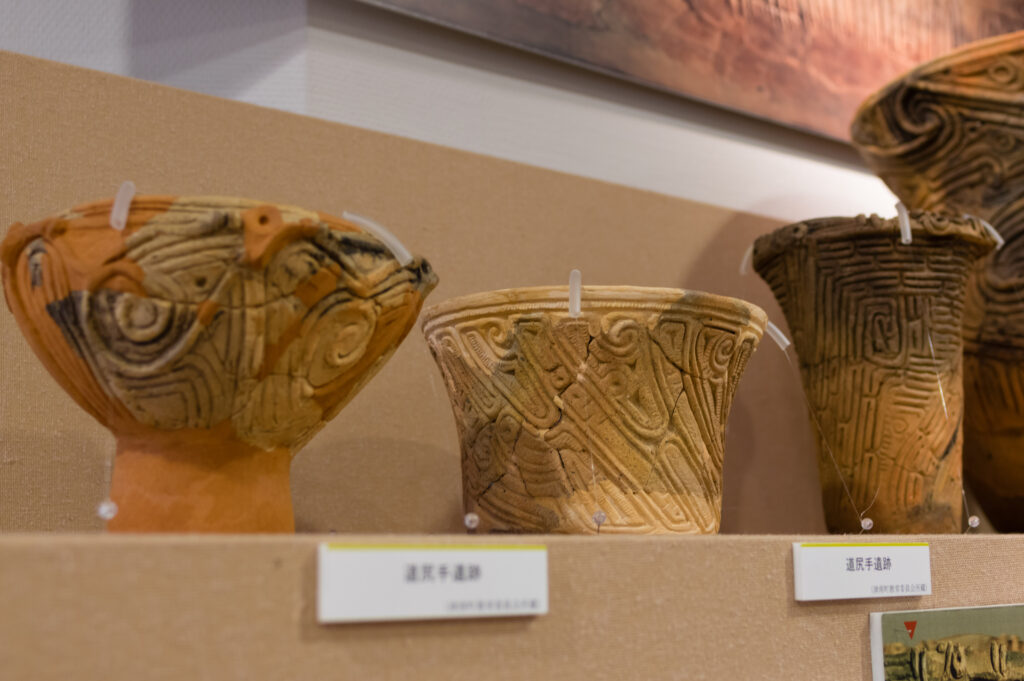
“Wait…”
There was a row of pottery that looked as if it had been sliced off from the neck up, the most ornate part of the Jomon Vessel with Flame-like Ornamentation.
The earthenware resembled the earthenware of the Noto Peninsula that I saw when I traveled to Hokuriku alone last year, in terms of the whiteness of the clay and the patterns on it. The earthenware of Noto was generally very carefully made, and I felt that it was the origin of the meticulous and delicate craftsmanship of Hokuriku. I wondered if the same pottery culture had spread here in Tsunan.
The pottery had a very stylish appearance. The pottery had a very stylish appearance. The characteristic “chicken head crown” and the jagged, wavy rim were neatly cut – not cut, but not originally there.- and the shape of the pottery, while distinctive, is very simple. In the case of the Jomon Vessel with Flame-like Ornamentation, the vertical ridge lines were placed diagonally, which gave the impression of sophistication.
However, the Jomon may have thought that this was not enough, and as we move forward, the body becomes thinner, and a small ring-like ornament is added to the rim. In addition, a very modest protrusion appears. The rim has jagged edges and four handles. The result is the characteristic shape of the Jomon Vessel with Flame-like Ornamentation.
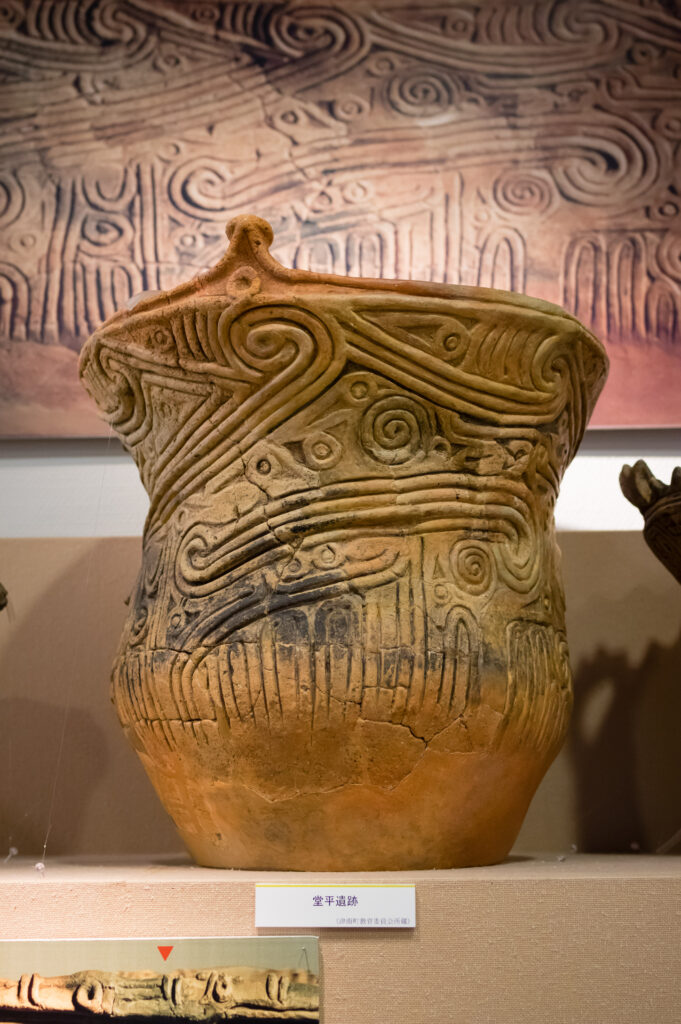
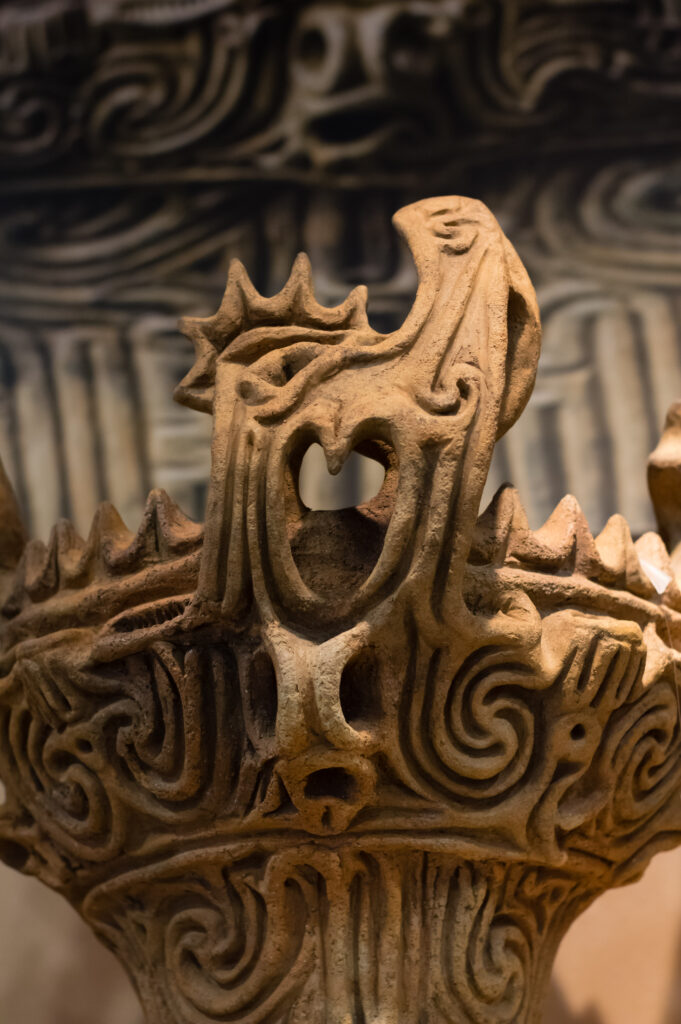
Until then, I had just imagined that someone had created such energetic earthenware from scratch. I guess there were great masters of earthenware, and there was a momentum to ” create original earthenware for our village” or something like that.
However, it seems that this is not the case.
The patterns were added little by little, as if carefully checking something. Seeing this, I thought it was like a car undergoing a series of minor changes.
But, a minor change in a car is supposed to be for the purpose of pursuing profit, which is to increase the sales volume. I felt that the Jomon period, when there was no such thing as money, was definitely different from what people were looking for. What was the purpose of changing the design of the pottery?
What is a pattern anyway?
To find out for sure, I think it is necessary to know what was the shared worldview of the society in the Shinano River basin at that time. But how can we get closer to the worldview of people who lived 5,500 years ago?
Then, suddenly, I thought, “Let’s go to the ruins.”
To be continued in second volume.
Text : Tomoko Kusakari, Photo : Yoshiaki Hirokawa
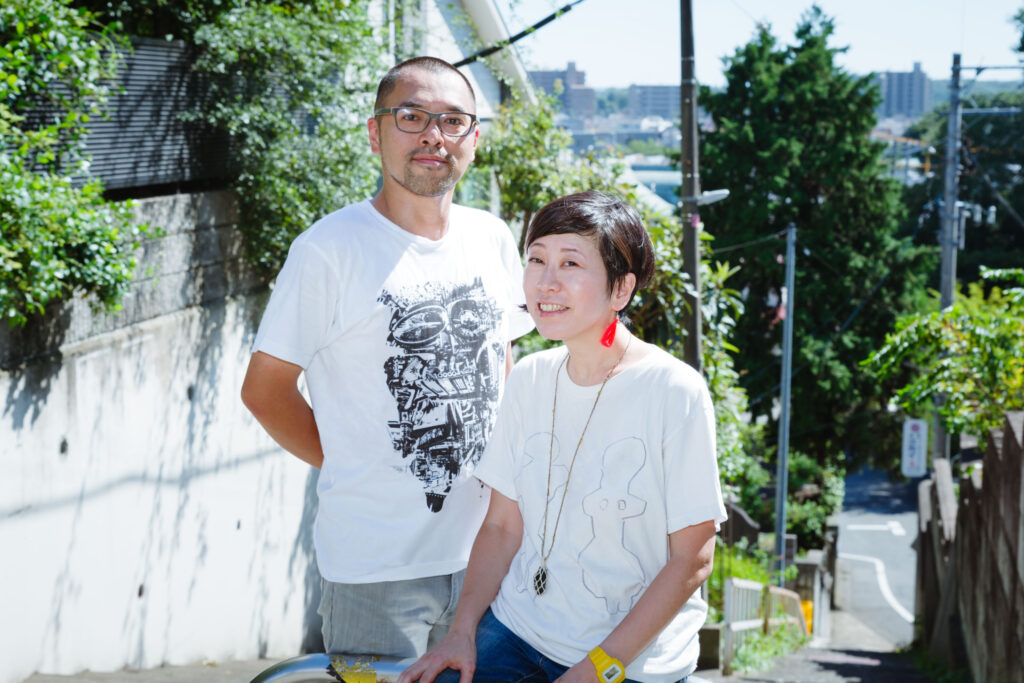
nawa to yajiri
(it means “Rope and Arrowhead”)
A unit for exploring the Jomon by Tomoko Kusakari (writing) and Yoshiaki Hirokawa (photography).
In addition to working as members of the NPO Jomonism, they also travel around Japan visiting Jomon ruins, archaeological sites and local museums, exploring the prehistoric values that can be deciphered from the forms and environments of the Jomon.
http://nawatoyajiri.com